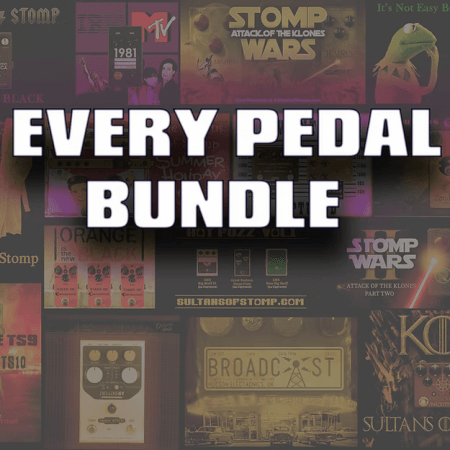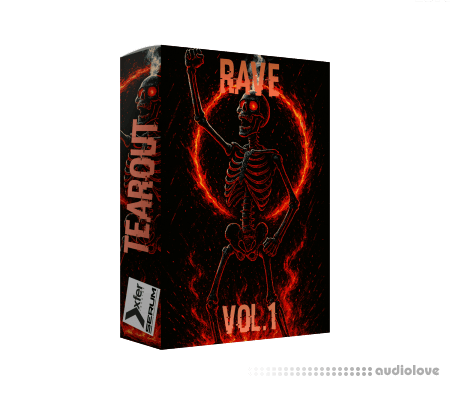Truefire Robben Ford's Trading Solos Uptempo Blues TUTORiAL

P2P | 07 August 2019 | 817 MB
Interactive Video Jam Session with a Top TrueFire Artist
In this Uptempo Blues edition of Trading Solos with Robben Ford, you’ll jam together over five frequently encountered uptempo blues grooves, in a variety of keys and feels including a Rhumba Blues in C Minor, an 8 Bar Blues in the Key of A, a 24-Bar Bo Diddley in the Key of A, an Extended Blues in the Key of G, and a Shuffle in the Key of C.
”It has been traditional throughout the history of music for musicians to get together to exchange ideas, jam, flesh out things they’re working on, and learn from each other in the process. That’s what we’ll be doing here in Trading Solos, working with 5 different uptempo blues tracks.
Playing with other musicians is really essential in the learning process; the great jazz musicians of all time, John Coltrane, Wayne Shorter, Sonny Rollins, etc. all used to practice together. So, it's wonderful to be able to do this with you here in this setting.”
Robben will share an essential variety of his go-to blues moves, comping techniques, and other key approaches to help you develop a versatile blues vocabulary.
For each of the five grooves, Robben will show you a handful of licks and comping approaches that you can use while trading solos in the course. Then, you'll take turns applying those ideas, trading solos, and comping.
Track 1: Otis Rhumba
”So, the first track we're going to play over is a rhumba feel in C minor. This is similar to something that would have been done in Chicago, or by Otis Rush, who had quite a few hits with this kinda groove. I'll show you three comping approaches, followed by three soloing licks that we can use to trade solos with each other. I'll show you some of the ways that I finger the chord moves that I'm playing on the rhumba, and then give you some different ways you can play them as well. The first soloing idea begins with a little "riff" that reminds me of Otis Rush, which I consider more of a melody. Another idea we can use in a solo to create a stronger dynamic and keep it moving forward is double-stops. A third approach is to use triads that exist within the context or scale of the chord. I'll start things off by taking a solo, and then I'll back you up while you take lead! Make sure to play rhythm while I'm soloing using our comping techniques, and listen for the soloing ideas we broke down earlier. Let's jam!”
Track 2: Blue Highway
”The next track that we're going to trade solos over is an 8-bar blues; something that I'm partial to. We're in the key of A, with two bars of A, two bars of D, one bar of A, one bar of E, another bar of A and finally another bar of E (or you could actually just stay on the A). For the first comping approach, I like to make sure that I'm establishing a feel with the rhythm section, so I'm hitting the downbeat. Our second idea is another classic blues comping technique, sliding 6th chords into the 9 chord. For the third idea, again in the spirit of the thematic approach, I'm playing something a little higher going into the chord. The first soloing idea is a little riff that you'd maybe hear someone play an octave higher than I do. I like this because you don't necessarily hear this kinda riff usually played in this register. I like the "jump" between one octave to a lower one. I open the second solo playing something very high, hitting a double-stop and extending it to create something exciting. I'm playing it back on the bridge on purpose, so you get the attack you need. Another idea that we can both use is using an open string after a note is played in succession, descending chromatically. I'll start things off by taking a solo, and then I'll back you up while you take lead! Make sure to play rhythm while I'm soloing using our comping techniques, and listen for the soloing ideas we broke down earlier. Let's jam!”
Track 3: Bo Diddley Squat
”The next track that we're going to trade solos over is a 24-bar blues in a kinda Bo Diddley feel in the key of A. It's considered 24-bars because we're counting them twice as fast. Let's take a listen, and then we'll look at three comping ideas and soloing techniques to use when we trade solos. The feel on this is kinda a Bo Diddley kind of beat, and has an intro before the blues form begins, over which I just played a low octave note. For the first approach, I'm creating a rhythm part by playing triads. Then, our second comping approach is just using a straight up 9 chord and changing up the rhythm with some shorter notes. A third approach we could take is a punchy, chordal motif that I've developed. The way I open the first solo is with a little melody that I'll show you here. It's kind of just going down the scale and has a couple of double-stops thrown in. On the second technique, in the third and fourth bars of the opening of this blues track, I do an arpeggiated and scalar riff. Our third idea happens on the third and fourth bars of the IV chord, containing a diminished arpeggio (made up of minor thirds). I'll start things off by taking a solo, and then I'll back you up while you take lead! Make sure to play rhythm while I'm soloing using our comping techniques, and listen for the soloing ideas we broke down earlier. Let's jam!”
Track 4: Big Sister
”So, the next track we're going to trade over is an extended blues, staying a little longer on the I chord before it changes to the IV in the key of G. The first approach I'd like to show you to this particular piece is very simple, playing a straight up major chord. It's not something I'd regularly do, but it just seems to fit this sort of track. The second comping approach we have is another traditional chord move, and for the third approach, I'm once again going up and playing something higher, building it up and keeping it interesting. The first soloing idea is using double-stops to create a little riff. Remember, with a riff like this (or anything, really) you can adjust it to make it your own. You don't have to play it exactly! Then, for our second soloing technique, I'm creating a theme, and then playing it at double-time. Finally, for our third approach, I'm going to show you something I played that includes movement through the chords as it goes through the IV chord (C) and into the Bb. I'll start things off by taking a solo, and then I'll back you up while you take lead! Make sure to play rhythm while I'm soloing using our comping techniques, and listen for the soloing ideas we broke down earlier. Let's jam!”
Track 5: C Shuffle
”The next track we're going to trade solos over is a nice uptempo shuffle in the key of C. The first comping idea we have here I'm playing on the downbeat, which is not necessarily common. I love the 9 chord for something like this, it sounds just right! Then, for the second approach, I'm incorporating a riff into the comping part. In the third approach, I'm playing a new set of chord voicings with a new rhythmic pattern as well. We're just hitting the top notes on this one. For the first riff, I open it with a double-stop. Then, I play a little arpeggiated pentatonic thing. The second soloing lick goes between the F and C chords, taking advantage of a diminished arpeggio to move between them. Our last idea is a pentatonic riff based on G minor, played over the C chord. So, it's like a 9 chord without the third. I'll start things off by taking a solo, and then I'll back you up while you take lead! Make sure to play rhythm while I'm soloing using our comping techniques, and listen for the soloing ideas we broke down earlier. Let's jam!”
Robben will explain and demonstrate all of the key concepts and approaches along the way. You’ll get standard notation and tabs. Plus, Robben includes all of the backing tracks for you to work with on your own. In addition, you’ll be able to loop or slow down any of the videos so that you can work with the lessons at your own pace.
Grab your guitar and let’s trade solos with Robben Ford!
home page:
https://bit.ly/33jsxpZ
DOWNLOAD
Related News:
 Truefire Jason Loughlin's Trading Solos Country TUTORiAL
Truefire Jason Loughlin's Trading Solos Country TUTORiALP2P | 07 August 2019 | 693 MB In this Country edition of Trading Solos with Jason Loughlin, you’ll jam together over five frequently encountered country grooves, in a variety of keys and feels including Classic Country, Country Shuffle, Country Boogie, Outlaw Country, and Two-Beat Country. Along the way, Jason will share an essential variety of go-to country soloing approaches, comping...
 Truefire Robben Ford's Trading Solos Moody Blues TUTORiAL
Truefire Robben Ford's Trading Solos Moody Blues TUTORiALP2P | 28 July 2019 | 983 MB In Robben Ford’s Moody Blues edition of Trading Solos, you’ll trade solos with Robben over five frequently encountered moody blues grooves, in a variety of keys and feels including a down-and-dirty Muddy Water style slow blues in the key of E, a G minor blues, a minor blues in the key of Dm, a 12-bar blues in A minor, and a blues in the key of G with a bit of a folky...
 Truefire Robben Ford's Urban Blues Revolution (2018) TUTORiAL
Truefire Robben Ford's Urban Blues Revolution (2018) TUTORiALP2P | 31 May 2018 | 870 MB Everybody knows that the blues comes out of the south, and was played on acoustic instruments. Then the blues migrated to the cities, and the urbanization of the blues brought about a lot of changes with all the influences that were there. The most radical was the electrification of the blues - the use of amplifiers and electric guitars gave rise to a variety of tones...





Comments for Truefire Robben Ford's Trading Solos Uptempo Blues TUTORiAL:
No comments yet, add a comment!